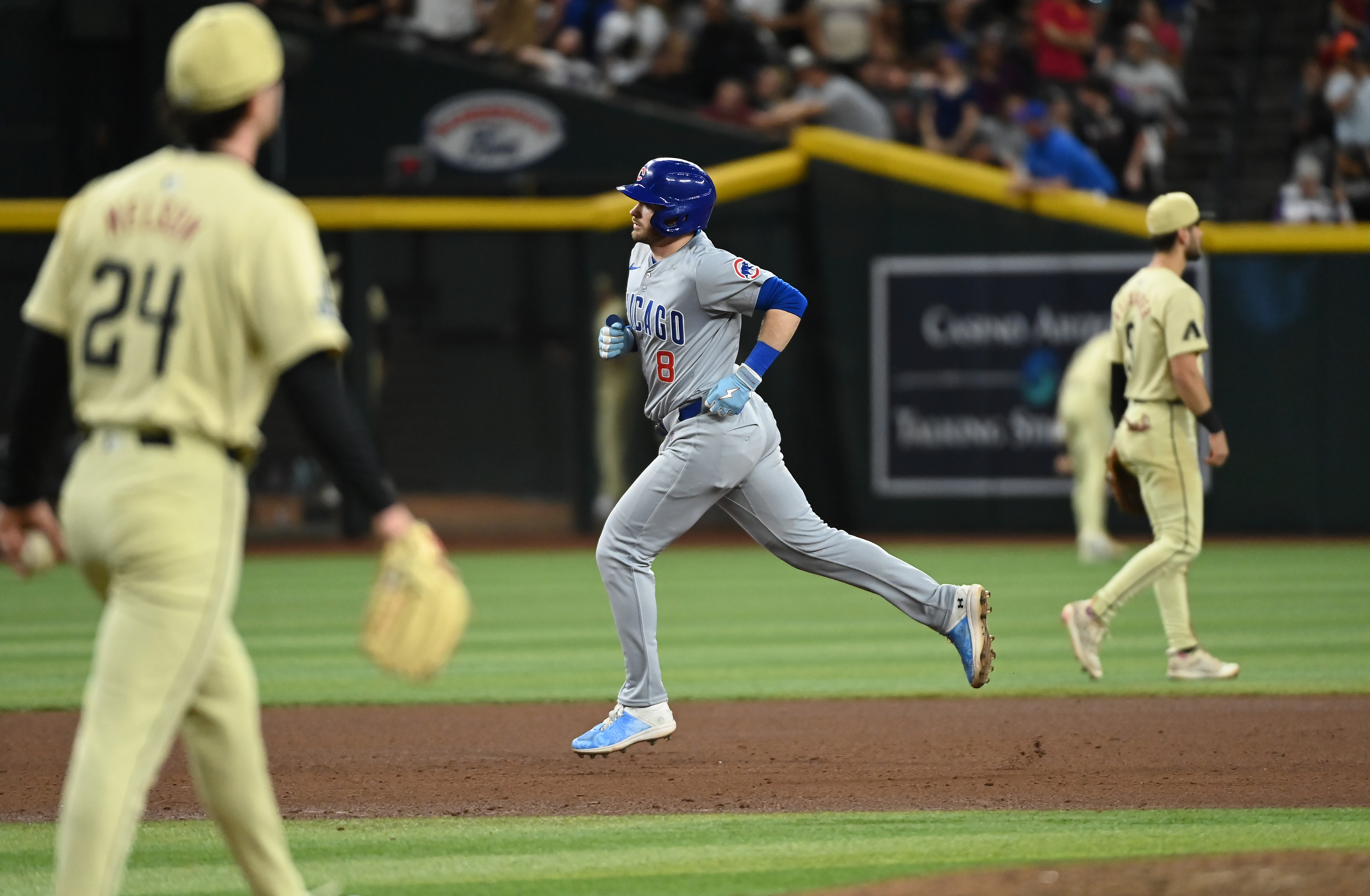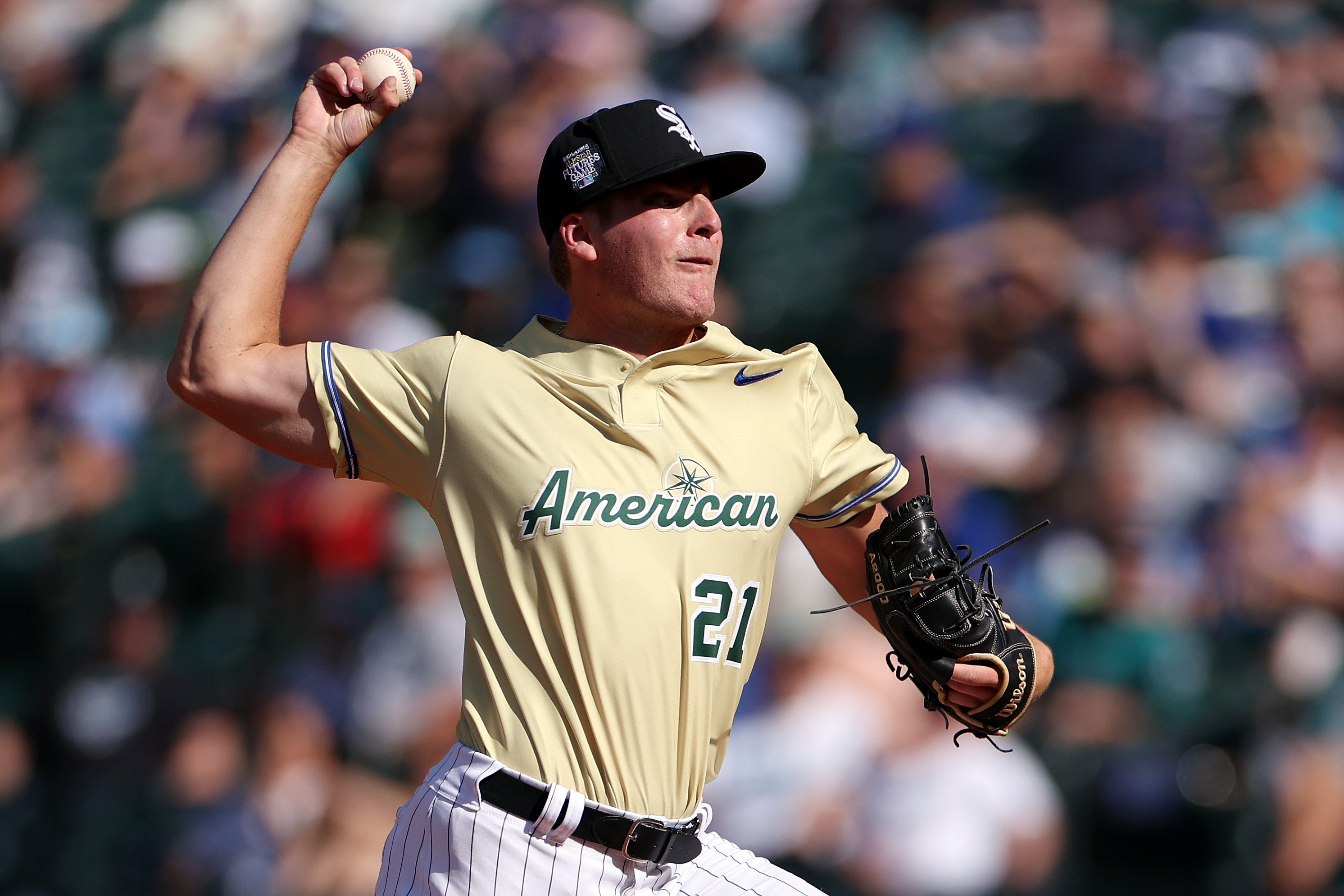
NEW YORK – The Cubs wanted Gary Sheffield to see this prospect with boom-or-bust potential and played the video of Javier Baez on a laptop.
Sheffield met with president of baseball operations Theo Epstein and then-manager Dale Sveum in an Opryland hotel room during the 2012 winter meetings in Nashville, Tennessee. They had played together for the Milwaukee Brewers, Sheffield taking over at shortstop after Sveum broke his leg in a devastating outfield collision in the late 1980s.
Sheffield got certified as an agent after playing 22 seasons in the big leagues and represented Jason Grilli, a reliever who interested the Cubs but would ultimately take a two-year, $6.75 million offer from the Pittsburgh Pirates and develop into an All-Star closer.
At a time when the Cubs wouldn’t spend big on free agents and needed to sell their vision of the future, Sveum gave Baez the ultimate compliment, saying Baez had Sheffield’s bat speed.
“I thought he had the goods then,” Sheffield said before Sunday’s Game 2 at Citi Field, where he’s working the National League Championship Series as an analyst for TBS.
[MORE CUBS: Cubs drafting Kyle Schwarber over Michael Conforto could tilt NLCS]
With all these young power pitchers, the New York Mets had been viewed as an obvious trading partner for a Cubs organization stocked with up-the-middle players. But within the last two years, Mets general manager Sandy Alderson said there was never a point where he thought the two sides gained traction and moved that close to an actual deal.
MLB
“No,” Alderson said. “They’re probably happy they didn’t make a trade, and we’re happy we didn’t make a trade.”
It’s been a rollercoaster, but Baez is showing that he can play shortstop in October and deliver big postseason hits while Addison Russell is sidelined with a strained left hamstring.
Baez can be viewed as a player with a high ceiling and a low floor, which might make him difficult to move as a centerpiece if the Cubs try to trade for pitching this winter.
Baez is still only 22 years old, with a first-round pedigree and an intriguing skill set that made him Baseball America’s No. 5 overall prospect after the 2013 season.
“I see the talent, and it’s showing in these playoffs,” Sheffield said. “(It’s) just maturity. With some guys, it takes a little while. But to be at his age and be up here in this situation, he’s handling himself very well.”
Sheffield — who got on base almost 40 percent of the time, never struck out more than 83 times in a season and retired with 509 home runs — understood Baez would have to shorten his swing.
Baez can still look out of control at times, but he’s more streamlined and disciplined than the rookie who struck out 95 times in 52 games with the Cubs last year.
Manager Joe Maddon wanted Baez on the Opening Day roster, but the Cubs waited for a September call-up. Baez took an extended leave of absence following the death of his younger sister and then missed more time at Triple-A Iowa with a fractured finger.
“Of course, he’s definitely an everyday kind of player,” Maddon said. “There’s no doubt about that. You just have to wait your turn sometimes. I remember when Sandy Alomar was coming up and Benito Santiago was catching. You knew Sandy Alomar should be an everyday catcher, but Benito Santiago was in the way.
“You don’t want to hold somebody back too long, because at that point it can become a negative. But it’s not bad to hold somebody back just long enough in regards to him really earning his spot and making sure that he’s ready.”
[NBC SHOP: Buy Cubs playoff gear]
The San Diego Padres wound up trading Alomar after the 1989 season, and the Cubs could finally be nearing that tipping point with Baez or Starlin Castro, a three-time All-Star shortstop who’s reinvented himself as a second baseman.
This October has showcased Baez, Castro and Russell, how the Cubs are creating a competitive culture and positioned for future playoff runs.
“Guys have to be patient, keep playing, keep getting better, keep understanding the game better,” Maddon said. “The result is a better brand of baseball where you’re not just like force-feeding guys into a spot.
“They have a good month or two months — and all of a sudden they’re ready — and then you see the mistakes on the major-league level and maybe a watered-down version of the game. So I’m good with — if you have that kind of depth — making people earn their stripes.”


